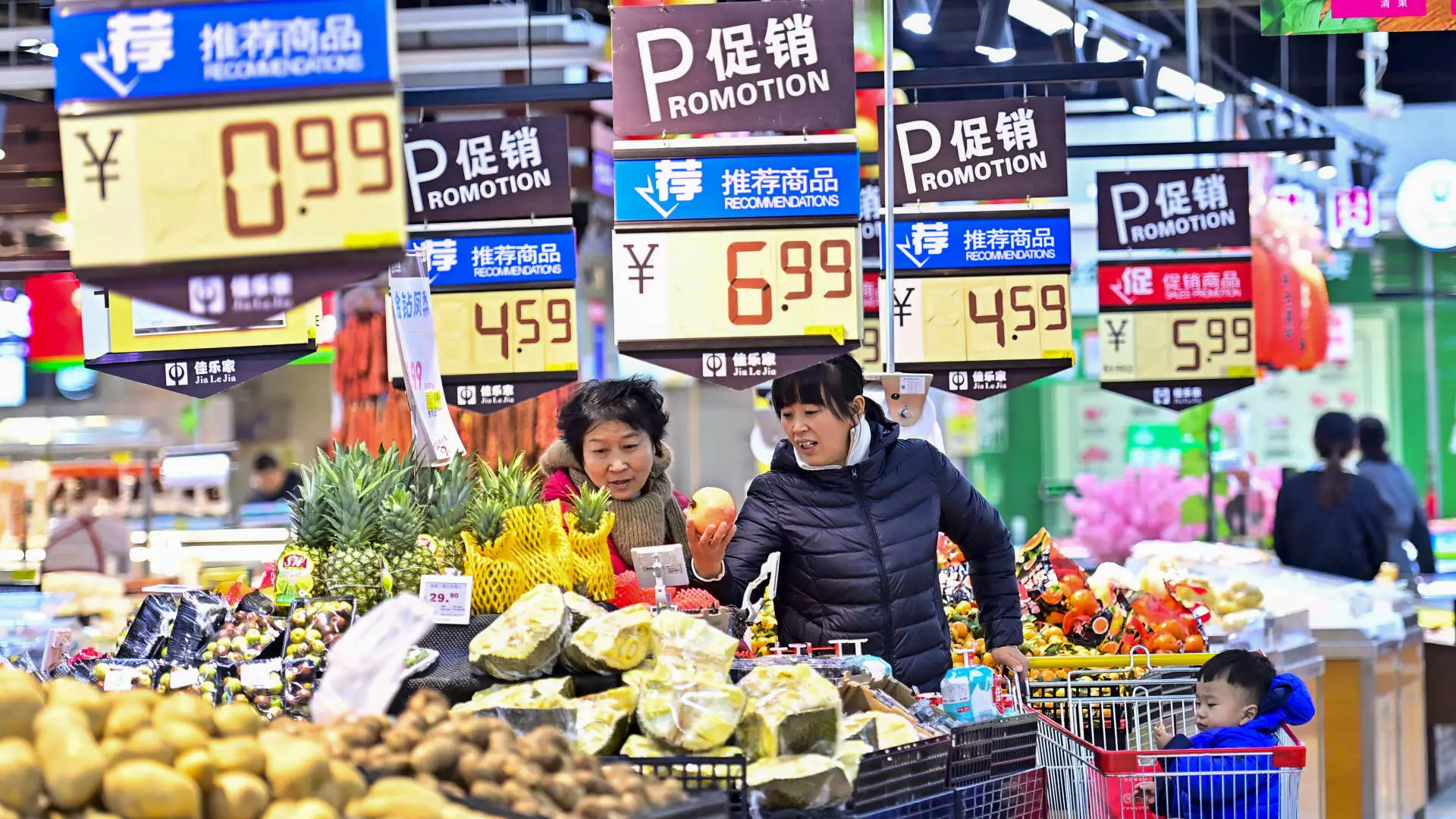China’s recent financial data reveals a concerning trend in consumer price inflation that has stirred discussions about the potential onset of deflation. December statistics reported a mere 0.1% year-on-year inflation rate according to the National Bureau of Statistics. This figure not only fell short of preceding estimates but marked a decline from the 0.2% uptick observed in November. As analysts dissect these numbers, the implications for China’s broader economic health and consumer confidence become exceedingly pronounced.
The core Consumer Price Index (CPI), which omits volatile categories such as food and energy, showed a slight increase of 0.4% year-on-year—up from 0.3% the previous month. On a month-to-month scale, however, the CPI remained stagnant, in stark contrast to November’s 0.6% decline. Notably, food prices illustrated a significant decrement, decreasing by 0.6% since the preceding month. Contributing factors included favorable weather conditions that led to an unexpected drop in prices for fresh vegetables and fruits, which fell by 2.4% and 1%, respectively. Particularly, prices for pork—a staple in the Chinese diet—also witnessed a 2.1% decline.
These declining food prices, especially in the face of historically elevated levels, have complicated the inflation narrative. Analysts from ANZ Bank caution that continuous pressure from falling pork prices might detract further from the overall CPI in the near future, thus unveiling a paradox in the inflation landscape.
China’s Producer Price Index (PPI) continued to exhibit a downward trend, marking the 27th consecutive month of decline with a 2.3% year-on-year drop in December. This reading, although better than expected, underscores ongoing struggles within the manufacturing sector. Infrastructure and real estate projects have been temporarily stalled, leading to decreased demand for essential resources like steel.
The persistent near-zero consumer inflation serves as a glaring indicator of weak domestic demand, stimulating fears of deflation that could hitch a ride on year-end consumer behaviors. Despite a cadre of stimulus measures from the government since September—including interest rate cuts and incentives directed at the property and stock markets—consumption remains tepid. Recent efforts, such as an expansion of the trade-in scheme for consumer goods, have been labeled ineffective in generating meaningful increases in broader consumption levels. Critics argue these subsidies serve merely as temporary solutions without fostering longer-term consumption habits.
Consumer Behavior in a Deflationary Environment
As Chinese consumers approach the Chinese New Year—a season typically characterized by gift-giving and spending—the prevailing sentiment appears cautious. Amid expectations for steep discounts, dreading higher prices may lead consumers to postpone purchases in hopes of better deals. This behavioral trend creates a self-fulfilling prophecy that could stall economic momentum. Comments from experts such as Shaun Rein underscore the limitations of targeted cash-for-clunkers programs, questioning their capacity to stimulate retail sectors that require more substantive economic revitalization.
As analysts project, there exist signs that give hint toward industrial recovery, particularly in factory activity, which has shown growth for three consecutive months. Nevertheless, the momentum seems to be waning, signaling substantial hurdles remain. Carlos Casanova of Union Bancaire Privée identifies challenges stemming from the weak property sector coupled with ongoing trade tensions with the United States, straining the economic emergence.
Contrasting optimism in certain aspects, lead economist Louise Loo at Oxford Economics posits a cautious outlook for China’s journey toward reflation. The enduring frailty in consumer appetite indicates that any anticipated recovery may still lag behind expectations. Furthermore, macroeconomic pressures have led the onshore yuan to weaken, hitting a 16-month low against the dollar, as external factors like rising Treasury yields come into play.
As China grapples with the dual imperatives of stimulating consumer demand and combating deflation, the road ahead appears fraught with complexity. Policymakers must craft strategies that transcend temporary solutions and foster genuine rejuvenation in consumer confidence. The interplay between inflation metrics, consumer behavior, and external economic pressures will shape China’s economic trajectory in the coming year. Without decisive action and innovative policies, the specter of deflation may continue to loom large over the world’s second-largest economy.


Leave a Reply